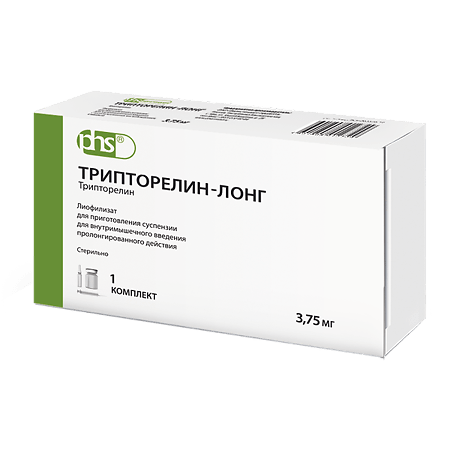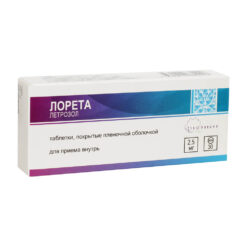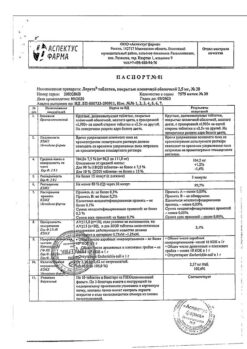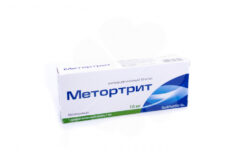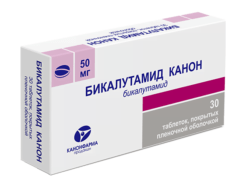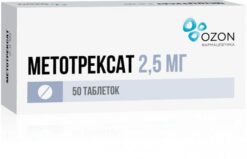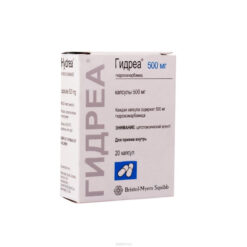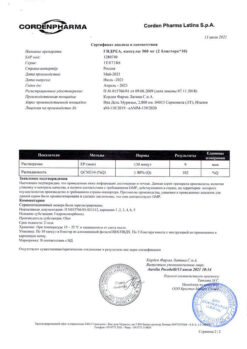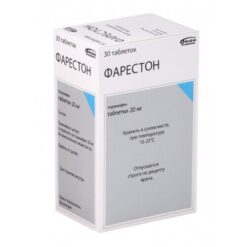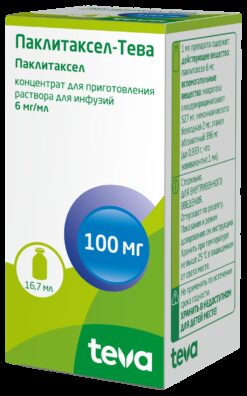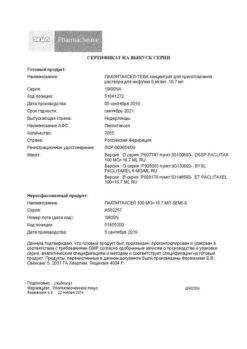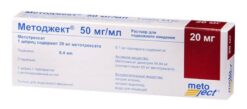No products in the cart.
Description
In women
1. Preoperative treatment of uterine fibroids:
Patients with anemia (hemoglobin < 80 g/l);
To reduce the size of the fibroid in order to facilitate surgical intervention (reduced blood loss and length of surgery) or change surgical tactics (laparoscopic or transvaginal access).
2. Genital and extragenital endometriosis (stages I-IV).
3. treatment of female infertility: ovulation induction in combination with gonadotropins (FSH, hMG (human menopausal gonadotropin), hCG (human chorionic gonadotropin)) in assisted reproductive technology (ART) programs.
In men
1. Prostate cancer:
– treatment of locally advanced prostate cancer as monotherapy, as part of combination therapy or adjuvant against the background of radiation therapy;
– treatment of metastatic prostate cancer.
Indications
Indications
In women
1. Preoperative treatment of uterine fibroids:
– in patients with anemia (hemoglobin < 80 g/l);
– to reduce the size of fibroids in order to facilitate surgical intervention (reduce the volume of blood loss and duration of the operation) or change surgical tactics (laparoscopic or transvaginal access).
2. Genital and extragenital endometriosis (stages I-IV).
3. Treatment of female infertility: ovulation induction in combination with gonadotropins (FSH, HMG (human menopausal gonadotropin), hCG (human chorionic gonadotropin)) in assisted reproductive technology (ART) programs.
In men
1. Prostate cancer:
– treatment of locally advanced prostate cancer as monotherapy, as part of combination therapy or as an adjuvant agent against the background of radiation therapy;
– treatment of metastatic prostate cancer.
Pharmacological effect
Pharmacological effect
Antitumor agent – gonadotropin-releasing hormone analogue
Special instructions
Special instructions
Caution should be exercised in patients taking anticoagulants, as hematoma may develop at the injection site.
Uterine fibroids and endometriosis
Before starting treatment, pregnancy must be excluded.
The drug Triptorelin-long should be prescribed only after in-depth diagnosis of uterine fibroids and endometriosis (laparoscopy and/or hysteroscopy).
Throughout the entire treatment period, including for 3 months from the date of the last injection, non-hormonal contraceptives should be used. Due to the possible effect of Triptorelin-Long on bone mineral density, treatment should not be recommended for a period of more than 6 months. Repeated courses of therapy with triptorelin or other GnRH analogues are not recommended.
Treatment of uterine fibroids should be carried out under ultrasound control, since a rapid decrease in the size of the uterus in some cases can lead to the development of uterine bleeding of varying duration and intensity.
For uterine fibroids, the most appropriate combination of therapy with Triptorelin-long followed by surgical treatment. The administration of triptorelin leads to a significant reduction in the size of the myomatous uterus, which facilitates the surgical technique. It is especially advisable to conduct a course of triptorelin therapy in young patients in order to preserve reproductive function, when organ-saving surgery can be performed using laparoscopic techniques.
During the first month, bleeding/bloody discharge from the vagina of varying intensity and duration is possible. If spotting/bleeding continues after the first month, it is necessary to determine the concentration of estradiol in the blood plasma. If the concentration of estradiol decreases to less than 50 pg/ml, other organic lesions may be present.
After cessation of triptorelin therapy, ovarian function is restored within 7-12 weeks. Given that menstruation should cease during triptorelin therapy, the patient should be appropriately instructed to notify her physician if regular menstruation continues. Prostate cancer
At an early stage, the drug Triptorelin-long causes a temporary increase in the concentration of testosterone in the blood plasma. As a result, during the first weeks of therapy, the appearance and intensification of clinical symptoms (in particular, bone pain, dysuric disorders) may be observed, which are transient in nature, and for which symptomatic therapy should be carried out. As with other GnRH agonists, isolated cases of spinal cord compression or urinary tract obstruction may occur. In case of spinal cord compression or urinary tract obstruction, standard treatment for these complications should be prescribed and, in emergency cases, orchiectomy (surgical castration) is suggested.
Patients should be closely monitored during the first few weeks of therapy (plasma testosterone concentration should not exceed 1 ng/ml), especially in patients with metastatic lesions of the spinal cord, patients at risk of spinal cord compression or urinary tract obstruction. For the same reason, special attention should be given at the beginning of treatment to patients with signs of spinal cord compression identified during a preliminary examination. During the initial phase of therapy, the use of additional antiandrogen drugs should be considered to prevent an initial increase in plasma testosterone concentrations and worsening of clinical symptoms.
Epidemiological data have shown that patients may develop metabolic abnormalities (eg, impaired glucose tolerance) during androgen deprivation therapy; increase the risk of cardiovascular diseases. However, prospective data have not confirmed an association between GnRH agonist treatment and increased cardiovascular mortality. Patients at high risk for metabolic and cardiovascular disease should be carefully assessed before treatment and closely monitored during androgen deprivation therapy.
At the beginning of therapy, a temporary increase in the activity of acid phosphatase in the blood plasma may be observed.
Function of the gonads and pituitary gland
The use of triptorelin in therapeutic doses leads to suppression of the gonad-pituitary gland system. Normal functioning of the gonads and pituitary gland is usually restored after cessation of therapy. The results of a diagnostic test of pituitary gonadotropic function performed during and after cessation of therapy may therefore be incorrect.
Osteoporosis
The use of GnRH agonists may cause a decrease in bone mineral density (BMD).
In men, long-term androgen deprivation with bilateral orchiectomy or GnRH analogues may be associated with an increased risk of bone loss and may lead to osteoporosis and increased risk of bone fracture.
Preliminary data suggest that the use of bisphosphonates in combination with GnRH may reduce BMD loss. Particular attention should be paid to patients with risk factors for osteoporosis (for example: chronic alcohol dependence; smoking; long-term therapy with drugs that reduce BMD, such as anticonvulsants or glucocorticosteroids; a history of hereditary osteoporosis; malnutrition or malnutrition).
In women, the use of GnRH agonists may be responsible for the decrease in BMD by an average of 1% per month over six months of treatment. Every 10% decrease in BMD leads to an increase in the risk of bone fracture by approximately 2-3 times.
In most women, BMD recovers after cessation of therapy.
There are no available data on the use of triptorelin in patients with established osteoprosis or with risk factors for osteoporosis (for example: chronic alcohol dependence; smoking; long-term therapy with drugs that reduce BMD, such as anticonvulsants or glucocorticosteroids; a history of hereditary osteoporosis; malnutrition or malnutrition, for example, anorexia neurosis). Given that a decrease in BMD is more likely in such patients, treatment with triptorelin should be prescribed on an individual basis and should only be initiated if the benefit obtained from treatment outweighs the risk. Additional testing should be considered to avoid loss of BMD.
Pituitary tumor
Rarely, the use of GnRH agonists may reveal the presence of a previously undiagnosed gonadotropic pituitary adenoma. Pituitary hemorrhage is characterized by sudden headache, visual disturbances and ophthalmoplegia.
Depression
Patients receiving triptorelin therapy are at increased risk of developing depression (which may be severe). Patients should be informed about the possible development of depression, and if depression develops, should receive appropriate therapy. Patients with known depression should be closely monitored during therapy.
QT prolongation
Long-term androgen deprivation may prolong the QT interval. A risk/benefit assessment should be performed before prescribing triptorelin to patients with congenital long QT syndrome, electrolyte abnormalities, or chronic heart failure; or patients taking drugs that may prolong the QT interval or drugs that may cause torsade de pointes (TdP), such as Class IA (eg, quinidine, procainamide) or Class III antiarrhythmic drugs (eg, amiodarone, sotalol).
Carrying out ovulation induction as part of ART
When treating infertility using IVF, Triptorelin-Long should only be used under the supervision of a specialist with experience in this field.
When carrying out IVF, the drug Triptorelin-long is used to stabilize the concentration of endogenous sex hormones with the subsequent administration of gonadotropins to stimulate follicle growth. The use of triptorelin helps to avoid premature spontaneous ovulation of stimulated follicles, which increases the effectiveness of the IVF program as a whole.
It is recommended to use the drug Triptorelin-long with caution during IVF in patients with polycystic ovary syndrome, because stimulation of a large number of follicles is possible.
Due to the fact that the use of the drug Triptorelin-long can lead to the development of ovarian hyperstimulation syndrome, regular clinical monitoring is necessary, including ultrasound of the ovaries.
It is necessary to determine the concentration of estradiol in the blood plasma in order to monitor the ovarian response during ovulation induction as part of ART (interruption of the ovulation stimulation cycle in case of excessive ovarian response and cessation of gonadotropin injections) and clinical manifestations of ovarian hyperstimulation syndrome.
Dose adjustment
It is necessary to adjust the dose of antihypertensive drugs when used together with Triptorelin-long.
Impact on the ability to drive vehicles. Wed and fur.:
Currently, there is no data on the possible effect of the drug Triptorelin-long on the ability to drive vehicles and operate machinery. However, the use of the drug can lead to the development of such undesirable reactions as headache, decreased vision, drowsiness, which can negatively affect the ability to drive vehicles and perform potentially hazardous activities that require increased concentration and speed of psychomotor reactions. If the symptoms described above occur, you should refrain from driving vehicles and machinery.
Active ingredient
Active ingredient
Triptorelin
Composition
Composition
Composition for 1 bottle (lyophilisate):
Active ingredient:
Triptorelin acetate
3.92 mg (4.12 mg*)
in terms of triptorelin
3.75 mg (3.94 mg*)
Excipients:
DL – lactic and glycolic acid copolymer (1:1)
200 mg
D – mannitol
85 mg
Carmellose sodium
30 mg
Polysorbate-80
2 mg
* Taking into account the characteristics of the dosage form, the drug contains a 5% excess of the active substance to ensure the administration of an effective dose.
Solvent for preparing the suspension: mannitol, 0.8% solution.
Composition per 1 ml: D – mannitol – 8.0 mg, water for injection – up to 1.0 ml.
Pregnancy
Pregnancy
The use of triptorelin during pregnancy is contraindicated.
Contraindications
Contraindications
– Hypersensitivity to triptorelin, other GnRH analogues, components of the drug and solvent;
– condition after previous surgical testiculectomy;
– pregnancy, breastfeeding period;
– children under 18 years of age.
With caution:
– In patients with prostate cancer at high risk of ureteral obstruction or spinal cord compression;
– in patients with an established diagnosis of osteoporosis or a high risk of its development;
– in patients with diagnosed depression;
– in patients taking anticoagulants, as hematoma may develop at the injection site;
– when carrying out long-term androgen deprivation in patients with congenital long QT syndrome, with electrolyte disturbances or chronic heart failure, or in patients taking class IA or class III antiarrhythmic drugs;
– when carrying out androgen deprivation in men at high risk of developing metabolic disorders and cardiovascular diseases;
– when performing an ART program in patients with polycystic ovaries, especially in cases where the number of follicles determined by ultrasound is more than 10.
Side Effects
Side Effects
Adverse reactions in men
Adverse reactions when using triptorelin are associated with its expected pharmacological effects: an initial increase in testosterone concentrations, and then an almost complete suppression of testosterone synthesis.
The frequency of adverse reactions that may occur during therapy is given in the following gradation: very often (> 1/10), often (> 1/100, 1/1000, 1/10000, <1/1000), very rarely (< 1/10000) and frequency unknown (frequency cannot be determined based on available data).
Infectious and parasitic diseases: very rarely – nasopharyngitis.
Immune system disorders: very rarely – anaphylactic reactions, hypersensitivity.
Metabolic and nutritional disorders: rarely – anorexia, decreased appetite, increased appetite; very rarely – diabetes mellitus; frequency unknown – gout.
Mental disorders: often – mood changes, depression, sleep disturbances, decreased libido; rarely – irritability, insomnia; very rarely – confusion, decreased activity, feeling of euphoria; frequency unknown – anxiety, loss of libido.
Nervous system disorders: very often – paresthesia of the lower extremities; often – headache; rarely – paresthesia, taste disturbance, drowsiness, astasia (impaired ability to stand associated with poor coordination), lethargy; very rarely – memory impairment; frequency unknown – dizziness.
Violations of the organ of vision: very rarely – discomfort in the eyes, blurred vision; frequency unknown – visual impairment.
Hearing disorders and labyrinthine disorders: rarely – tinnitus; frequency unknown – vertigo.
Vascular disorders: very often – “hot flashes”; uncommon – increased blood pressure, thromboembolism; frequency unknown – decreased blood pressure.
Disorders of the respiratory system, chest and mediastinal organs: uncommon – bronchial asthma; rarely – shortness of breath; very rarely – nosebleeds, shortness of breath that occurs when lying down.
Gastrointestinal disorders: often – nausea; rarely – abdominal pain, constipation, diarrhea, vomiting, bloating, flatulence, dry mouth; frequency unknown – gastralgia.
Disorders of the skin and subcutaneous tissues: very often – hyperhidrosis; infrequently – hypotrichosis; rarely – alopecia, acne, itching, rash; very rarely – blisters; frequency unknown – Quincke’s edema, urticaria, purpura.
Musculoskeletal and connective tissue disorders: very often – back pain; often – pain in the limbs; rarely – muscle spasm, muscle weakness, myalgia, arthralgia; very rarely – swelling of the joints, stiffness of muscles and joints, osteoarthritis; frequency unknown – musculoskeletal pain, joint stiffness, bone pain.
Renal and urinary tract disorders: very often – dysuria.
Disorders of the genital organs and mammary gland: often – erectile dysfunction; rarely – gynecomastia, testicular atrophy, testicular pain, engorgement of the mammary glands; frequency unknown – pain in the mammary gland, lack of ejaculation.
General disorders and disorders at the injection site: very often – asthenia; often – increased fatigue, reaction at the injection site, pain at the injection site, redness at the injection site, inflammation at the injection site, swelling, irritability; rarely – pain; very rarely – fever, flu-like syndrome; frequency unknown – discomfort, chest pain, malaise.
Laboratory and instrumental data: infrequently – increased activity of lactate dehydrogenase, gamma-glutamyltransferase, decreased body weight; rarely – increased activity of alanine aminotransferase, aspartate aminotransferase, increase in body weight, increase in the concentration of creatinine, urea in the blood plasma; very rarely – increased activity of alkaline phosphatase in the blood plasma, hyperthermia; frequency unknown – increased blood pressure.
Triptorelin causes a transient increase in circulating testosterone concentrations during the first week after the first injection of the drug. In this regard, there may be a temporary worsening of prostate cancer symptoms, which is usually manifested by urinary tract disorders and increased pain due to metastatic lesions. These symptoms are transient and usually disappear after 1-2 weeks.
In isolated cases, obstruction of the urinary tract or metastatic compression of the spinal cord is noted. As a result, patients with metastatic lesions of the spinal cord and/or obstruction of the upper or lower urinary tract should be monitored more closely during the first few weeks after initiation of therapy. The use of GnRH agonists for the treatment of prostate cancer may be associated with an increased risk of bone loss, the development of osteoporosis, and an increased risk of bone fractures.
Patients receiving long-term therapy with GnRH analogues in combination with radiation therapy may experience a greater number of adverse reactions, especially from the gastrointestinal tract, which are associated with the course of radiation therapy.
Adverse reactions in women
As a result of a decrease in estrogen concentrations, the most common adverse reactions may be: headache, decreased libido, sleep disturbance, mood changes, dyspareunia, dysmenorrhea, vaginal bleeding, ovarian hyperstimulation syndrome, ovarian enlargement, pelvic pain, abdominal pain, dry vaginal and vulvar mucosa, increased sweating, hot flashes and asthenia.
The frequency of adverse reactions that may occur during therapy is given in the following gradation: very often (> 1/10), often (> 1/100, 1/1000, 1/10000, <1/1000), very rarely (< 1/10000) and frequency unknown (frequency cannot be determined based on available data).
Immune system disorders: uncommon – anaphylactic reactions; frequency unknown – increased sensitivity.
Mental disorders: very often – decreased libido, mood changes, sleep disturbances; often – depression, depressed mood; frequency unknown – anxiety, confusion.
Nervous system disorders: very often – headache; frequency unknown – dizziness, paresthesia.
Visual disorders: frequency unknown – blurred vision, blurred vision.
Hearing and labyrinthine disorders: frequency unknown – vertigo.
Vascular disorders: very often – “hot flashes”.
Disorders of the respiratory system, chest and mediastinal organs: frequency unknown – shortness of breath.
Gastrointestinal disorders: very often – abdominal pain; often – nausea, feeling of discomfort in the abdomen; frequency unknown – diarrhea, vomiting. Disorders of the skin and subcutaneous tissues: very often – hyperhidrosis; frequency unknown – angioedema, itching, rash, urticaria.
Musculoskeletal and connective tissue disorders: very often – bone pain; often – arthralgia, muscle spasm; infrequently – back pain; frequency unknown – myalgia, muscle weakness, bone resorption.
Disorders of the genital organs and mammary gland: very often – vaginal bleeding, dryness of the vaginal mucosa, dyspareunia, dysmenorrhea, ovarian hyperstimulation syndrome, enlarged ovaries, pain in the pelvic area, menorrhagia, metrorrhagia; often – pain in the mammary glands; frequency unknown – amenorrhea.
General disorders and disorders at the injection site: very often – asthenia; often – fatigue, irritability, reactions at the injection site, pain at the injection site, erythema and inflammation at the injection site; frequency unknown – fever, malaise.
Laboratory and instrumental data: often – increase in body weight; uncommon – increased activity of lactate dehydrogenase, gamma-glutamyltransferase, alanine aminotransferase, aspartate aminotransferase, increased cholesterol concentration; frequency unknown – increased blood pressure, decreased body weight.
At the beginning of treatment, during a period of short-term increase in the concentration of estradiol in the blood plasma, the symptoms of endometriosis, including pelvic pain and dysmenorrhea, may worsen. These symptoms are transient and usually disappear after 1-2 weeks. Uterine bleeding, including menorrhagia and metrorrhagia, may occur within one month after the first injection. There may be an increase in the size of the ovaries, pain in the pelvic area and/or pain in the abdominal area.
Interaction
Interaction
There have been no controlled clinical studies of the interaction of triptorelin with other drugs. However, the possibility of interaction of triptorelin with other drugs, including drugs that promote the release of histamine, cannot be ruled out.
It is not recommended to prescribe triptorelin simultaneously with drugs that increase the concentration of prolactin in the blood plasma, since these drugs reduce the number of GnRH receptors in the pituitary gland.
It is also necessary to take special precautions and monitor the concentration of sex hormones in the blood plasma when using triptorelin in combination with drugs that affect the secretion of gonadotropins by the pituitary gland.
Long-term androgen deprivation may prolong the QT interval. A risk/benefit assessment should be performed before prescribing triptorelin to patients with congenital long QT syndrome, electrolyte abnormalities, or chronic heart failure; or patients taking drugs that may prolong the QT interval or drugs that may cause torsade de pointes (TdP), such as Class IA (eg, quinidine, procainamide) or Class III antiarrhythmic drugs (eg, amiodarone, sotalol).
Overdose
Overdose
Cases of triptorelin overdose have not been described.
In case of overdose, symptomatic therapy is indicated.
Recommendations for use
Recommendations for use
The drug Triptorelin-long is administered intramuscularly (i.m.). The site of administration of the drug should be changed.
Triptorelin-long should only be used under the supervision of a physician experienced in these indications.
Uterine fibroids and endometriosis
The drug Triptorelin-long is administered at a dose of 3.75 mg (1 injection) IM once every 28 days. Treatment should begin in the first 5 days of the menstrual cycle.
The duration of treatment depends on the severity of endometriosis and the observed clinical picture (functional and anatomical changes) and changes in the size of uterine fibroids, determined by ultrasound, during therapy. The duration of use of the drug for endometriosis is 4-6 months due to the possible effect on bone density.
The duration of therapy for preoperative treatment of uterine fibroids is no more than 3 months.
Repeated courses of treatment with triptorelin or other GnRH agonists are not recommended.
VRT
The drug Triptorelin-lopg is administered once at a dose of 3.75 mg (1 injection) intramuscularly on the 2nd day of the menstrual cycle.
Prostate cancer
The drug Triptorelin-long is administered in a dose of 3.75 mg (1 injection) IM once every 28 days, for a long time.
In patients with locally advanced prostate cancer, when treated in combination with radiation therapy, long-term antiandrogen therapy (3 years) is preferable to short-term antiandrogen therapy (6 months).
Use in certain patient groups
No dose adjustment is required in elderly patients and patients with impaired renal function.
Rules for preparing the suspension and administering the drug
The drug is administered only intramuscularly.
– Suspension for intramuscular injection is prepared immediately before administration using the supplied solvent.
– The drug should be prepared and administered only by specially trained medical personnel.
– Keep the bottle with Triptorelin-long strictly vertical. By lightly tapping the bottle, ensure that all the drug is at the bottom of the bottle.
– Open the syringe, attach the supplied needle measuring 0.8 mm x 40 mm to it to withdraw the solvent.
– Open the ampoule with the solvent and draw the entire contents of the ampoule into the syringe, set the syringe to the 2 ml level.
– Remove the plastic cap from the bottle containing the drug. Disinfect the rubber stopper of the bottle with a swab soaked in alcohol. Insert the needle into the bottle with the drug through the center of the rubber stopper and carefully introduce the solvent along the inner wall of the bottle, without touching the contents of the bottle with the needle.
– Remove the syringe and needle from the bottle.
– The bottle must remain motionless until the drug is completely saturated with the solvent and a suspension is formed. Without turning the bottle over, check for dry residue at the walls and bottom of the bottle. If dry residues of the drug are detected, leave the bottle until completely saturated (about 3-5 minutes).
– After you have ensured that there are no remains of the dry drug, carefully mix the contents of the bottle in a circular motion for 30-60 seconds until a homogeneous suspension is formed.
– Do not invert or shake the bottle.
– Replace the needle on the syringe with a needle measuring 1.2 mm x 50 mm (for collecting the suspension). Insert the needle through the rubber stopper into the bottle. Then lower the cut of the needle down and, tilting the bottle at an angle of 45 degrees, slowly draw the entire suspension into the syringe. Do not invert the bottle when drawing. A small amount of the drug may remain on the walls and bottom of the bottle. Consumption for the residue on the walls and bottom of the bottle is taken into account.
– Immediately after drawing the suspension into the syringe, remove the needle. Replace with a 1.1mm x 40mm needle, carefully invert the syringe and remove any air from the syringe.
– Administer the drug suspension immediately after preparation.
– Use an alcohol swab to disinfect the injection site. Insert the needle deep into the gluteal muscle, then pull the syringe plunger back slightly to make sure there is no damage to the vessel. Inject the suspension slowly with constant pressure on the syringe plunger. If the needle becomes clogged, replace it with another needle of the same diameter.
– Dispose of needles in sharps containers.
– For repeated injections, the left and right gluteal muscles should be alternated.
– Cases of incomplete injection leading to the loss of a large amount of suspension must be reported to your doctor.
Storage conditions
Storage conditions
Store in a place protected from light, at a temperature not exceeding 25 °C.
Keep out of the reach of children.
Shelf life
Shelf life
Lyophilisate – 2 years; Solvent – 3 years.
Manufacturer
Manufacturer
Pharmstandard-UfaVITA, Russia
Additional information
| Shelf life | Lyophilizate – 2 years; Solvent – 3 years. |
|---|---|
| Conditions of storage | Store in the dark place at a temperature not exceeding 25 °С. Store out of the reach of children. |
| Manufacturer | Pharmstandard-UfaVITA, Russia |
| Medication form | lyophilizate |
| Brand | Pharmstandard-UfaVITA |
Related products
Buy Triptorelin-long (Diphereline), lyophilizate 3.75mg with delivery to USA, UK, Europe and over 120 other countries.

